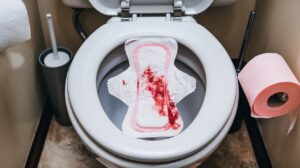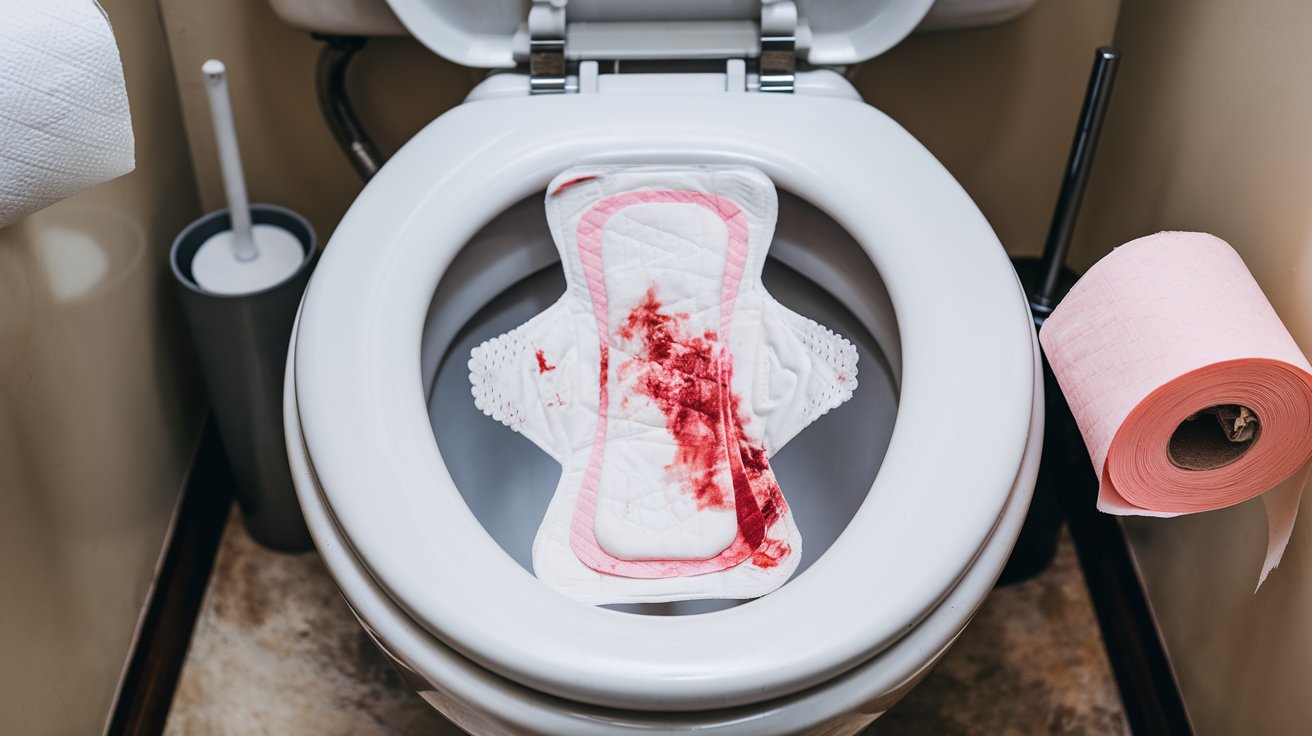Are Pads a Source of Infections?

Because they are convenient and simple to use, menstrual pads are among the most often utilized goods during periods. Despite their overall safety, extended wear or inappropriate use may result in infections and other health problems. Menstrual health and general well-being depend on knowing how pads may contribute to infections, what kinds of infections they may cause, and how to avoid them.
1. The Potential Role of Pads in Infections
Although pads are not intrinsically dangerous, a number of circumstances associated with their use may make infections more likely. These consist of:
Extended Use: If a pad is worn for an extended period of time, it may retain heat and moisture, which might encourage the growth of germs and fungi.
Bad Hygiene Practices: Reusing old pads or not washing your hands before and after changing them might spread dangerous bacteria to the vaginal region.
Material Composition: A lot of pads have chemicals, perfumes, or synthetic materials that might irritate delicate skin, causing micro tears and increasing the region’s susceptibility to infections.
Lack of Ventilation: Certain pads are composed of materials that aren’t breathable, which might raise the temperature and moisture content and promote the growth of bacteria.
2. Infection Types Linked to Pad Usage
Pads can cause a number of illnesses if they are not used or maintained correctly, including:
a. Vaginosis caused by bacteria (BV)
Cause: An imbalance in the vagina’s natural bacteria, which is frequently made worse by exposure to synthetic materials or extended dampness.
Symptoms include itching, gray or white discharge, and an unpleasant odor.
Risk factors include not changing pads often enough, using scented pads, and poor hygiene.
b. Infections with yeast
Cause: Because pads produce a warm, wet environment, a kind of fungus called Candida overgrows.
Symptoms include thick white discharge, redness, edema, and intense itching.
Risk factors include prolonged pad use, particularly in hot and muggy conditions.
c. Infections of the urinary tract (UTIs)
Cause: Perineal bacteria getting into the urethra. This danger may be increased by improper pad hygiene.
Symptoms include pelvic discomfort, burning when urinating, and frequent urine.
Risk factors include inadequate personal cleanliness, infrequent pad changes, and the urethra’s close proximity to the vaginal region.
d. Rashes and Skin Infections
Cause: Synthetic materials, prolonged friction, or allergic responses to pad chemicals.
Redness, swelling, itching, or severe rashes are some of the symptoms.
Risk factors include not treating irritation right once or using pads composed of non-breathable materials.
f. TSS, or toxic shock syndrome
Cause: Although tampons are more frequently linked to TSS, extended usage of super-absorbent pads can also result in the development of germs (such Streptococcus or Staphylococcus aureus) that cause the condition.
Flu-like symptoms, fever, rash, and dizziness are among the symptoms.
Risk factors: Infrequent, but possible if pads are not replaced over a long period of time.
3. Infections Associated with Pads: Symptoms and Signs
Early detection of infection symptoms is essential for prompt treatment. Typical signs and symptoms include:
a persistent burning or itching feeling in the vagina or around.
abnormal discharge from the vagina (yellow, green, gray, or odorous).
discomfort or pain when urinating or having sex.
redness, edema, or irritation of the skin.
flu-like symptoms or fever (in extreme instances, such TSS).
See a healthcare professional for a diagnosis and course of treatment if you see any of these symptoms.
4. Avoiding Pad-Related Infections
The risk of infections can be considerably decreased by practicing good hygiene and selecting the appropriate items. Here are some pointers:
a. Replace Pads Frequently
Even with a small flow, change your pad every 4–6 hours to avoid bacterial development and moisture accumulation.
You might need to replace more often on days with high flow.
b. Select the Proper Pad
To prevent aroma irritation, choose unscented pads.
Utilize cotton-based or breathable cushions to promote ventilation and lessen moisture and heat.
Think about natural pads that aren’t constructed of synthetic or chemical materials.
c. Continue to Practice Good Hygiene
Hands should be completely cleaned both before and after changing pads.
Every time you change, wash your vagina with lukewarm water. Steer clear of feminine washes and strong soaps since they might alter the pH balance.
d. Put on relaxed attire
To avoid heat and moisture accumulation, use cotton underwear that fits loosely and breathes.
When you’re menstruating, stay away from synthetic materials and tight-fitting clothing.
e. Properly dispose of pads
Used pads should be disposed of hygienically by wrapping them in paper or biodegradable bags. Avoid flushing them since this may cause environmental damage and plumbing problems.
f. Steer clear of extended sitting
Wearing a pad while sitting for extended periods of time might increase heat and friction. Get up and walk about from time to time.
g. Examine Pad Substitutes
Period underwear, menstrual cups, or reusable cotton pads can be kinder to the skin and lower the chance of infections and discomfort.
5. Knowing When to Get Medical Help
The majority of pad-related infections are minor and treatable, but in certain cases, prompt medical intervention is necessary. See a physician if you suffer from:
severe or getting worse symptoms, such fever, strange discharge, or excruciating pain.
TSS symptoms include disorientation, vomiting, and a high temperature.
persistent rashes or skin irritation that does not go away with simple treatment.
recurring infections, as they might be a sign of a more serious problem.
A medical expert may correctly diagnose the condition and suggest a course of therapy, including topical creams, antibiotics, or anti fungal drugs.


